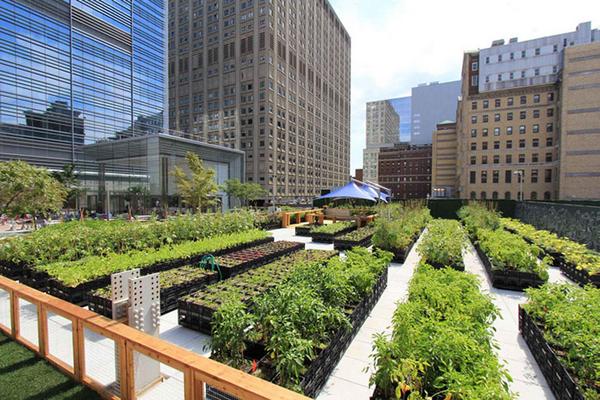9 Simple Techniques For City Blooming
9 Simple Techniques For City Blooming
Blog Article
The Single Strategy To Use For City Blooming
Table of ContentsThe 5-Second Trick For City BloomingNot known Facts About City BloomingThe Single Strategy To Use For City BloomingSome Of City BloomingCity Blooming Can Be Fun For Anyone
Intrigued in growing food to buy in the City of Chicago? Considering beginning an area garden? Modifications to the Chicago Zoning Ordinance enable agricultural usages like neighborhood yards and metropolitan ranches in many parts of the city. Below is a listing of regularly asked concerns relating to the regulations and policies that cultivators should take into consideration when intending a city farming task.
The zoning amendment does not customize any type of various other codes managing composting, structure authorizations, acquiring or leasing City had building, service licenses or environmental contamination. There are existing codes that regulate these problems and they remain in full result and might be appropriate to your job. Neighborhood gardens are normally owned or managed by public entities, civic companies or community-based organizations and preserved by volunteers.
Urban farms expand food that is intended to be marketed, either on a not-for-profit or for-profit basis. As a result of their business purpose, urban ranches call for a service permit. Yes. A neighborhood yard is allowed to sell excess generate that was grown on website if the sales are accessory or secondary to the garden's key purpose defined above.
The Definitive Guide for City Blooming
Composting is permitted however only for plant product that is created and used on site. The quantity of garden compost product can not exceed 25 cubic yards at any kind of provided time according to the standards in 7-28-715 of the City's Municipal Code. Yes. Because the dirt at most brand-new garden websites requires modifying, garden compost, soil, timber chips, or various other products can be gotten to build or boost the growing room - balcony and patio garden design.

If a building authorization is called for then the hoophouse will be taken into consideration an accessory building. You can learn even more regarding the building permit requirements by getting in touch with the Division of Buildings. The 25,000-square-foot dimension limitation is intended to avoid a single area yard from dominating a given block or diminishing the block's existing domestic or industrial personality.
The restriction does not apply to yards situated in Public Open Area (POS) areas. Can there be more than one community garden that is 25,000 square feet on a single block? Yes. The size limitation puts on private yards, not to individual blocks. No. Secure fencing is not required, however, yards that have large parking lot might be needed to set up fencing or other landscape design features.
The Ultimate Guide To City Blooming
B1 & B2 areas call for that all business use activities be conducted inside your home. Is secure fencing needed for metropolitan farms? Fencings might be required, along with landscaping and testing, for specific parking locations and outside work or storage locations depending on place and the specific task taking location.
Urban farms call for structure authorizations and zoning approvals prior to building and construction (garden care). Other forms of city evaluation might be needed depending on details structures, activities, size, landscaping, licensing, public health and stormwater management issues.
Yes. The sort of certificate is figured out by what is occurring at the website. The Department of Organization Affairs and Customer Protection can help determine the details kind of company certificate that's required. Yes. Off street car parking is required for many commercial projects in Chicago. The needed number of parking areas is based upon the number of workers dealing with site and not the square video of the growing room.
How City Blooming can Save You Time, Stress, and Money.

Yes. A city ranch can sell compost material produced on website, however, the operation has to follow the regulations in 7-28-715 of the Chicago Municipal Code. Yes. Aquaponic systems are enabled inside on urban ranches in several zoning areas. However, a zoning evaluation and structure license is called for in order to mount structures or systems and an organization license is needed as described above.
Approximately five hives or nests of honey may be kept as an accessory use. Nevertheless, beekeepers should register with the Illinois Department of Agriculture. For more information regarding the recommended zoning amendment you may get in touch with the Division of Housing and Economic Advancement, Bureau of Preparation and Zoning at 312.744.8563.
, which takes place in country areas at the edge of suburban areas.
Getting The City Blooming To Work
It can include an activity of organic cultivators, "foodies" and "locavores", who look for to form socials media based on a shared principles of nature and neighborhood holism. These networks can develop using formal institutional support, coming to be incorporated into regional community planning as a "change town" activity for sustainable metropolitan development.
In either situation, the more direct accessibility to fresh veggie, fruit, and meat items that may be know through city farming can enhance food protection and food safety while lowering food miles, leading to lower greenhouse gas discharges, thereby adding to environment modification mitigation. Some of the very first proof of city more agriculture originates from Mesopotamia.
Report this page